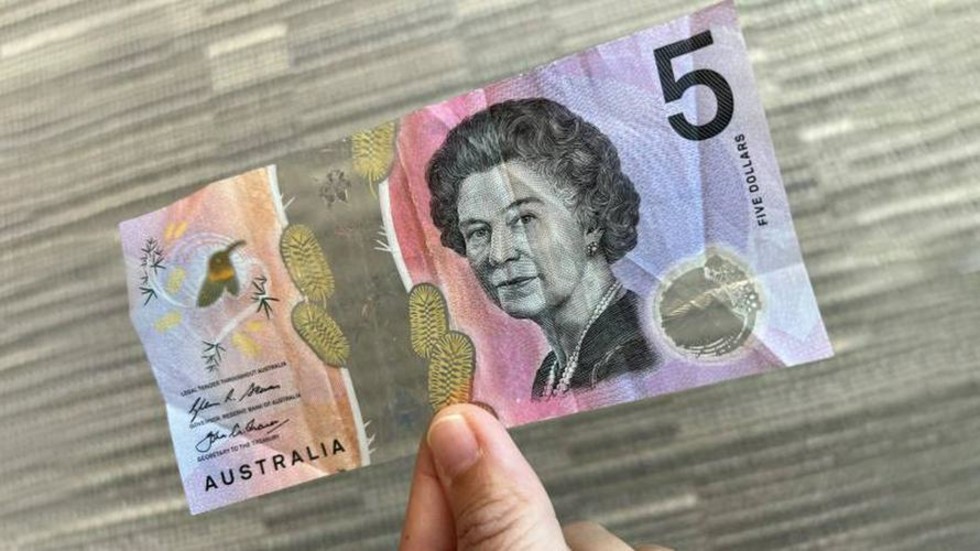
New $5 bill won’t feature the visage of Charles III in favor of “indigenous” design

File photo: A $5 Australian bill featuring the late Queen Elizabeth II © Mladen ANTONOV / AFP
The central bank of Australia announced on Thursday that the new $5 bill will feature a design honoring “the culture and history of the First Australians” instead of the portrait of King Charles III. The banknote currently depicts the late Queen Elizabeth II.
“The monarch will still be on the coins, but the $5 note will say more about our history and our heritage and our country, and I see that as a good thing,” Treasurer Jim Chalmers told reporters in Melbourne.
Worth about $3.55 in American dollars, the fiver is Australia’s smallest-denomination banknote. There are an estimated 208 million notes currently in circulation, showing the portrait of the late queen on one side and the Australian parliament building in Canberra on the other.
Indigenous groups will be consulted on the appropriate replacement design, a process that may take several years, the bank said. The current design will remain in circulation for the time being, and continue to be legal tender even afterward. Australia’s new 50-pence coin, due later this year, will still feature the portrait of Charles III.
Elizabeth II passed away in September, after a 70-year reign. Though Australia has been formally independent since 1901, it considers the British monarch its symbolic head of state.

Read more
The opposition Liberal Party has criticized the decision to remove Charles from the banknote, suggesting it was part of the ruling Labor’s agenda to turn Australia into a republic. Liberal leader Peter Dutton said PM Anthony Albanese was behind the move, and urged Australians to oppose “the woke nonsense that goes on.”
The bank announcement came as Australian Foreign Minister Penny Wong and Defense Minister Richard Marles were in London for meetings with their British counterparts. While the Albanese government remains committed to the “AUKUS” pact with the UK and the US, Wong reminded her hosts that Australia’s identity is no longer primarily British.
“Today, as a modern, multicultural country, home to people of more than 300 ancestries and the oldest continuing culture on earth, Australia sees itself as being in the Indo-Pacific, and being of the Indo-Pacific,” Wong said in a speech at King’s College on Tuesday.
The “story we tell the world about who we are,” Wong argued, is “the starting point of our foreign policies.”
Wong, 54, was born in Malaysia but moved to Australia when she was eight. She noted that half of her family are ethnic Chinese, who worked on plantations and as domestic servants for the British.
“Such stories can sometimes feel uncomfortable – for those whose stories they are, and for those who hear them,” Wong said. “But understanding the past enables us to better share the present and the future.”




